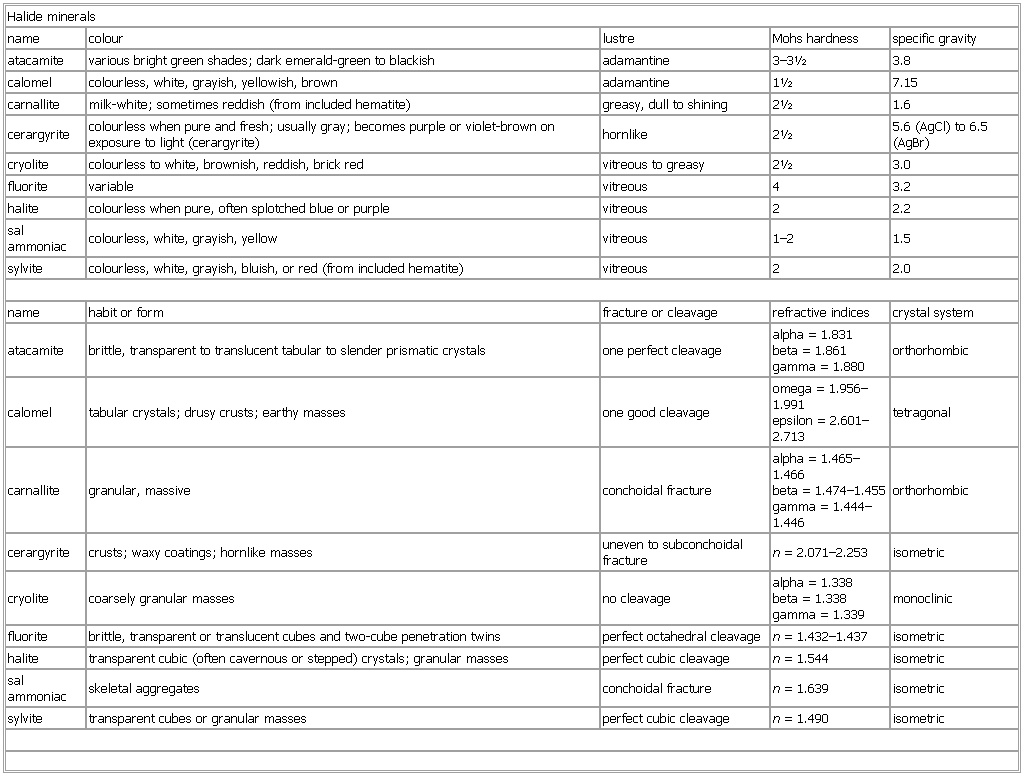- Halide minerals
-
▪ TableHalide mineralsname colour lustre Mohs hardness specific gravityatacamite various bright green shades; dark emerald-green to blackish adamantine 3–3½ 3.8calomel colourless, white, grayish, yellowish, brown adamantine 1½ 7.15carnallite milk-white; sometimes reddish (from included hematite) greasy, dull to shining 2½ 1.6cerargyrite colourless when pure and fresh; usually gray; becomes purple or violet-brown on exposure to light (cerargyrite) hornlike 2½ 5.6 (AgCl) to 6.5 (AgBr)cryolite colourless to white, brownish, reddish, brick red vitreous to greasy 2½ 3.0fluorite variable vitreous 4 3.2halite colourless when pure, often splotched blue or purple vitreous 2 2.2sal ammoniac colourless, white, grayish, yellow vitreous 1–2 1.5sylvite colourless, white, grayish, bluish, or red (from included hematite) vitreous 2 2.0name habit or form fracture or cleavage refractive indices crystal systematacamite brittle, transparent to translucent tabular to slender prismatic crystals one perfect cleavage alpha = 1.831beta = 1.861gamma = 1.880 orthorhombiccalomel tabular crystals; drusy crusts; earthy masses one good cleavage omega = 1.956–1.991epsilon = 2.601–2.713 tetragonalcarnallite granular, massive conchoidal fracture alpha = 1.465–1.466beta = 1.474–1.455gamma = 1.444–1.446 orthorhombiccerargyrite crusts; waxy coatings; hornlike masses uneven to subconchoidal fracture n = 2.071–2.253 isometriccryolite coarsely granular masses no cleavage alpha = 1.338beta = 1.338gamma = 1.339 monoclinicfluorite brittle, transparent or translucent cubes and two-cube penetration twins perfect octahedral cleavage n = 1.432–1.437 isometrichalite transparent cubic (often cavernous or stepped) crystals; granular masses perfect cubic cleavage n = 1.544 isometricsal ammoniac skeletal aggregates conchoidal fracture n = 1.639 isometricsylvite transparent cubes or granular masses perfect cubic cleavage n = 1.490 isometricSee as table:

* * *
Universalium. 2010.
